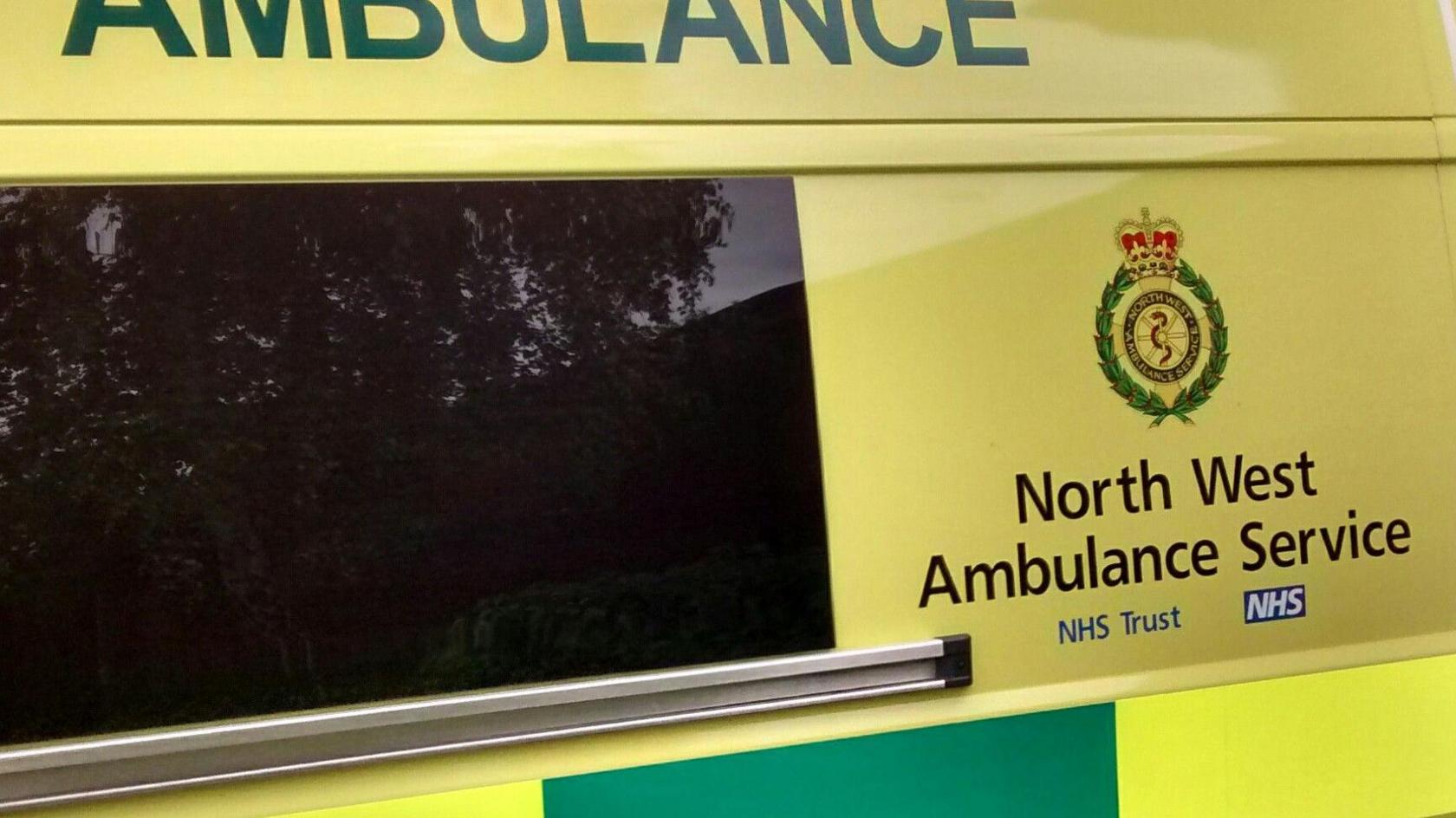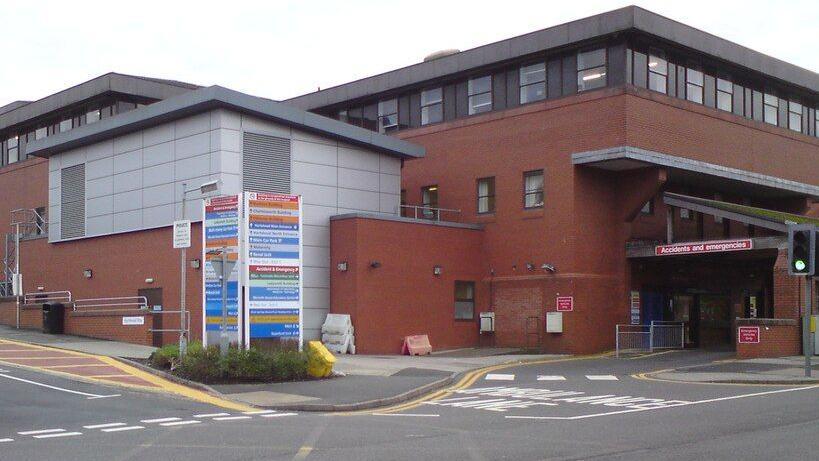Ambulance response warning after woman's death

The coroner said ambulance crews had been held up at hospitals
- Published
Long waiting times at hospitals in the north-west of England are putting patient's lives at risk by holding up ambulance crews, a coroner has warned.
It comes after the death of Bobilya Mulonge, who called 999 with breathing problems on 24 November 2022.
She waited 72 minutes for an ambulance - four times longer than North West Ambulance Service's (NWAS) 18-minute target for her category of emergency call - which "probably contributed to her death", coroner Lauren Costello said.
A NWAS spokesman said the service was "very sorry" an ambulance was unable to attend sooner and the service had made "significant" improvements since.
A report by Ms Costello has been sent to the health secretary and NWAS and urges the region's health authorities to take action to prevent further deaths.
She said evidence about ambulance delays revealed during the inquest had given rise to her concerns.
"In my opinion there is a risk that future deaths could occur unless action is taken," she wrote.

Mrs Mulonge died in Tameside Hospital after waiting 72 minutes for an ambulance
Mrs Mulonge, 62, lost consciousness during her 999 call and was in cardiac arrest when paramedics arrived.
Her heart was restarted but she died three hours later at Tameside General Hospital.
An inquest was told NWAS was unable to meet average response standards at the time of the 999 call, mainly because “ambulances were unable to clear the region’s hospitals because of long waiting times there”.
The service's performance standards, external for Mrs Mulonge's category of call meant she should have been seen in an average time of 18 minutes. In at least 9 out of 10 times it should be within 40 minutes.
The coroner’s report found at the time of the her call, the ambulance service was experiencing high call volumes, putting it under extreme pressure and preventing it from effectively delivering the service.
'Bottleneck crisis'
Dale Ollier, north-west regional organiser for Unison, which represents some ambulance staff, said backlogs in moving patients out of hospitals was having a "knock-on effect" at A&E, leading to a "bottleneck crisis".
“We have patients that could be safely discharged but there isn’t anywhere to discharge them to because of the lack of capacity in social care."
Ambulances were working "flat out", he added, but delays had lead to an "unbearable demand" on crews who were sometimes "tied up for several hours" waiting at hospitals.
NWAS has put in place a number of measures to address response times, including regular meetings with NHS Trusts to discuss delays, deploying managers to help struggling A&E departments, and grouping certain patients, the report said.
Ms Costello said despite these, delays were continuing "because the service can’t be fully utilised as a result of the delays in ambulances clearing A&E”.
A NWAS spokesman said "significant progress" has been made to improve ambulance response times in the past 18 months by increasing the numbers of ambulances and staff.